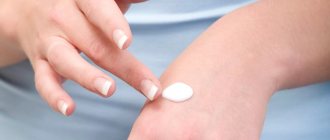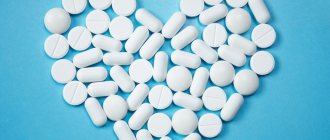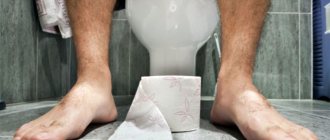Causes of Stevens-Johnson syndrome
Stevens-Johnson syndrome develops under the influence of rapid allergic reactions. There are only four groups of factors that can provoke the occurrence of the disease:
- medicines;
- infections;
- malignant diseases;
- reasons of unknown nature.
In childhood, Stevens-Johnson syndrome very often occurs against the background of viral diseases, such as viral hepatitis, measles, influenza, herpes simplex, chickenpox, and mumps. The main provocateur may be a bacterial factor (tuberculosis, mycoplasmosis, salmonellosis, tularemia, yersiniosis, brucellosis), as well as a fungal cause (trichopytosis, coccidioidomycosis, histoplasmosis).
In adulthood, Stevens-Johnson syndrome is explained by the administration of medications, as well as a possible ongoing malignant process. Among medications, the main cause may be antibiotics, anti-inflammatory non-steroidal drugs, sulfonamides and a central nervous system regulator.
Interestingly, carcinomas and lymphomas play a leading role in cancer and the development of Stevens-Johnson syndrome. If it is impossible to establish the etiological factor, we are talking about idiopathic Stevens-Johnson syndrome.
Etiology
The pathology is based on an instantaneous allergic reaction, which develops in response to the introduction of allergenic substances into the body.
Factors provoking the onset of the disease:
- herpes viruses, cytomegalovirus, adenovirus, human immunodeficiency virus;
- pathogenic bacteria - tuberculosis and diphtheria mycobacteria, gonococci, brucella, mycoplasma, yersinia, salmonella;
- fungi - candidiasis, dermatophytosis, keratomycosis;
- medications - antibiotics, NSAIDs, neuroprotectors, sulfonamides, vitamins, local anesthetics, antiepileptic and sedative drugs, vaccines;
- malignant neoplasms.
The idiopathic form is a disease with an unknown etiology.
Symptoms of Stevens-Johnson syndrome
The onset of Stevens-Johnson syndrome is characterized by rapidly developing symptoms. At the very beginning it is usually noted:
- general malaise with body temperature rising to 40°C;
- characteristic headache;
- arthralgia;
- tachycardia;
- muscle aches;
- your throat may hurt;
- a cough may appear;
- vomit;
- diarrhea.
After a couple of hours (maximum - after a day), large blisters appear on the oral mucosa. After the opening of such blisters, extensive defects appear on the mucous surfaces, which are covered with a white-gray or yellow film. Crusts formed from dried blood also appear. The border of the lips may be involved in this pathological process. Due to severe damage to the mucous membranes in Stevens-Johnson syndrome, patients are not even able to drink or eat.
Effect on the eyes
Eye damage in its characteristics is very similar to allergic conjunctivitis, however, it is often complicated by secondary infection with the further development of inflammation with purulent content. Stevens-Johnson syndrome is also characterized by the formation of erosive and ulcerative elements on the cornea and conjunctivitis. Such elements are usually small in size. Damage to the irises and the development of iridocyclitis, blepharitis and keratitis are also possible.
Damage to mucous membranes
Infection of the mucous membranes of the genitourinary system occurs in 50% of cases of this syndrome. The lesion is expressed by urethritis, vulvitis, balanoposthitis, vaginitis. Usually, scarring of erosions and ulcers of the mucous membranes leads to the formation of urethral stricture.
How is the skin affected?
The affected skin is represented by a significant number of rounded elements with elevation. Such elevations resemble blisters and are purple in color, reaching 5 cm. A peculiarity of the elements of such a skin rash in the case of Stevens-Johnson syndrome is the appearance of blood and serous blisters in the center. If such blisters are opened, bright red defects covered with crusts form. The main place of rashes is the skin of the perineum and torso.
The time for new rashes to appear in Stevens-Johnson syndrome lasts approximately 3 weeks, and healing lasts 1.5-2 months. It should be said that the disease is complicated by pneumonia, bleeding from the bladder, colitis, bronchiolitis, secondary bacterial infection, acute renal failure and even loss of vision. Due to developing diseases, about 10-12% of patients with Stevens-Johnson syndrome die.
Hypoallergenic diet
Below is a list of permitted products:
- boiled lean meats,
- vegetable soups and from various cereals. They can be cooked using recycled beef broth or with the addition of various refined oils,
- jacket potatoes,
- rice, oatmeal and buckwheat porridge,
- dairy products. Cottage cheese, yogurt and kefir are mainly prescribed,
- fresh vegetables and spices,
- granulated sugar, tea,
- dried fruit compotes. It can also be made from fresh berries.
The daily intake of proteins is 15 g, fats - 150 g, carbohydrates - 200 g. Total calorie content is 2800 kilocalories. The remaining nutritional recommendations will be provided by a specialist.
Diagnosis of Stevens-Johnson syndrome
A doctor can identify Stevens-Johnson syndrome based on the presence of specific symptoms that can be detected during an experienced dermatological examination. By interviewing the patient himself, you can determine the cause that caused the development of this disease. A skin biopsy can confirm the diagnosis. Histological examination may reveal necrosis of epidermal cells, as well as possible perivascular infiltration by lymphocytes and subepidermal appearance of blistering-like elements.
Clinical analysis will help identify nonspecific signs of inflammation, and a procedure such as a coagulogram will help detect clotting disorders. Using a biochemical blood test, a reduced level of proteins is determined. The most valuable thing in diagnosing Stevens-Johnson syndrome is considered to be a blood test using an immunological method. With the help of such a study, it is possible to detect an increased level of T-lymphocytes, as well as specific antibodies.
To diagnose Stevens-Johnson syndrome you will need:
- carrying out bacterial sowing of separated elements;
- coprogram;
- urine analysis (biochemical);
- taking a Zimnitsky sample;
- Kidney CT;
- Ultrasound of the kidneys and bladder;
- X-rays of light.
If necessary, the patient can seek advice from a urologist, pulmonologist, ophthalmologist and nephrologist.
Differential diagnostics are also carried out in order to distinguish Stevens-Johnson syndrome from dermatitis, which is known to be characterized by the presence of blisters (simple contact dermatitis, Dühring's dermatitis herpetiformis, allergic dermatitis, various forms of pemphigus, including vulgar, true, foliate and vegetative, as well as Lyell's syndrome).
Causes of defeat
Carpal tunnel syndrome (carpal tunnel syndrome).
causes, symptoms, signs, diagnosis and treatment of pathology There are several main reasons why the disease appears and develops. These include four types of factors that influence the progression of the disease:
- Infectious sources that affect human organs and negatively affect the overall course of the disease.
- The use of a certain group of drugs that provoke the formation of the disease in childhood.
- Malignant processes are benign neoplasms and characteristic tumors that are characterized by a special nature of origin.
- Causes that cannot be determined by the attending physician due to insufficient medical information.
In children, such a process can develop due to a viral disease, while the rash in adults has a different nature and is clearly due to the use of medications or the presence of malignant phenomena and tumors. If we talk about young children, then many diseases act as provoking factors in this case:
- measles;
- hepatitis;
- herpes;
- chickenpox;
- flu;
- fungi;
- bacterial infections.
Treatment of Stevens-Johnson syndrome
Treatment of Stevens-Johnson syndrome is carried out using significant doses of glucocorticoid hormones. Due to damage to the oral mucosa, drugs must be administered by injection. The doctor begins to gradually reduce the administered doses only after the symptoms become less pronounced and when the patient’s condition improves.
In order to cleanse the blood of immune complexes formed in Stevens-Johnson syndrome, the method of extracorporeal hemocorrection is usually used, including membrane plasmapheresis, immunosorption, cascade filtration and hemosorption. Specialists perform transfusions of plasma and protein solution. Great importance is given to the amount of fluid introduced into the human body, as well as maintaining daily diuresis. For the purpose of additional therapy, drugs containing calcium and potassium are used. If we talk about the treatment and prevention of secondary infection, it is carried out using local or systemic antibacterial drugs.
Stephen-Johnson syndrome or Lyell's syndrome?
One of the main prognostic factors for Lyell's syndrome is the area of the necrolyzed surface. Therefore, a correct assessment of its length is very important. For this, the same rules are used as in combustiology: the rule of “nine” - when the arms, chest and stomach are considered to be 9% of the body surface, and the back and legs are 18% each; and the “one percent palm” rule. For a more accurate assessment, it is recommended to measure the area of the separated and separated epidermis not only in areas with pronounced erythematous changes, but also in areas of the body remote from the “epicenter”. Depending on the area of the surface affected by necrolysis, clinical differences between Lyell’s syndrome and Stephen-Johnson syndrome are distinguished.
For 30 years - since the late 70s - corticosteroids were considered an essential part in the treatment of Lyell's syndrome. In recent years, criticism has emerged regarding their effectiveness: in particular, it is indicated that their use increases the risk of septic complications.
In recent years, the theory has been gaining popularity that these syndromes are two variants of the severe outcome of an epidermolytic skin reaction to medications and differ only in the degree of skin detachment.
Procedure for updating clinical recommendations
The clinical picture is characterized by the appearance of multiple polymorphic rashes in the form of purplish-red spots with a bluish tint, papules, blisters, and target-shaped lesions. Very quickly (within several hours) bubbles the size of an adult’s palm or larger form in these places; merging, they can reach gigantic sizes.
The most severe damage is observed on the mucous membranes of the mouth, nose, genitals, the skin of the red border of the lips and in the perianal area, where blisters appear, which quickly open, revealing extensive, sharply painful erosions, covered with a grayish fibrinous coating. Thick brown-brown hemorrhagic crusts often form on the red border of the lips.
Unfavorable prognostic factors for the course of SSc:
- Age{amp}gt; 40 years old – 1 point;
- Heart rate {amp}gt; 120 per min. – 1 point;
- Defeat {amp}gt; 10% of the skin surface – 1 point;
- Malignant neoplasms (including history) – 1 point;
- In a biochemical blood test:
- glucose level {amp}gt; 14 mmol/l – 1 point;
- urea level {amp}gt; 10 mmol/l – 1 point;
- bicarbonates {amp}lt; 20 mmol/l – 1 point.
- Medical specialists: dermatovenerologists;
- Residents and students of advanced training cycles in the specified specialties.
The first blisters appear on the oral mucosa. When these formations are opened, wounds are observed covered with a yellow, whitish and grayish coating, as well as dark spots of dried blood. Eating becomes almost impossible. The patient cannot even drink water.
Damage to the mucous membrane of the eyes in the initial stages of the disease resembles conjunctivitis, often with complications in the form of purulent inflammation, proliferation of corneal vessels and entropion of the eyelid.
The skin next to these formations peels off, as if scalded with boiling water. At first, the rash appears on the face, arms and legs, but after a few days the lesions spread throughout the body. The exception is the scalp, as well as the palms and feet.
The disease is characterized by a pronounced pain syndrome. Even with light pressure on unaffected areas of the skin, the patient suffers severe pain.
Competent treatment - advice from doctors
Ehlers-Danlos syndrome
Once the diagnosis has been confirmed, treatment should begin immediately. Delay may cost the patient’s life or lead to the development of more serious complications.
Help that can be provided to a patient at home before hospitalization. It is necessary to prevent dehydration of the body. This is the main thing at the first stage of therapy. If the patient can drink on his own, then he should be given clean water regularly. If the patient cannot open his mouth, then several liters of saline solution are injected intravenously.
The main therapy will be aimed at eliminating intoxication of the body and preventing complications. The first step is to stop giving the patient the drugs that provoked the allergic reaction. The only exception may be vital medications.
After hospitalization, the patient is prescribed:
- Hypoallergenic diet - food should be blended or liquid. In severe cases, the body will be fed intravenously.
- Infusion therapy - saline and plasma-substituting solutions are administered (6 liters per day of isotonic solution).
- Ensure complete sterility of the room so that no infection can enter the opening of the wound.
- Regular treatment of wounds with disinfectant solutions and mucous membranes. For the eyes, azelastine, for complications - prednisolone. For the oral cavity - hydrogen peroxide.
- Antibacterial, painkillers and antihistamines.
The basis of treatment should be hormonal glucocorticoids. Often, the patient’s oral cavity is immediately affected and he cannot open his mouth, so medications are administered by injection.
To cleanse the blood of toxic substances, the patient undergoes plasma filtration or membrane plasmapheresis.
With proper therapy, doctors usually give a positive prognosis. All symptoms should subside 10 days after starting treatment. After some time, the body temperature will drop to normal, and the inflammation in the skin, under the influence of the drugs, will subside.
Full recovery will occur in a month, no more.
Online consultations with doctors
| Consultation with a cord blood bank specialist |
| Consultation with an oncologist-mammologist |
| Doctor consultation-ultrasound |
| Allergist consultation |
| Consultation with a neurosurgeon |
| Consultation with a proctologist |
| Consultation with a neuropsychiatrist |
| Consultation with a child psychologist |
| Genetic consultation |
| Consultation with a plastic surgeon |
| Psychiatrist consultation |
| Consultation with an immunologist |
| Consultation with a cosmetologist |
| Consultation of general issues |
| Consultation with a reproductive specialist (diagnosis and treatment of infertility) |
Medical news
Digital Pharma Day. Be at the forefront of the digital transformation of the pharmaceutical industry, 10/09/2020
The EpiLaser network has the lowest prices for ELOS hair removal in Kyiv, 09.14.2020
Generosity prolongs life, 09/07/2020
There is no universal diet, - scientists, 06/19/2020
Health news
The speed of spread of COVID-19 depends on climatic conditions, 06/11/2020
Researchers have counted six varieties of coronavirus, 06/11/2020
Scientists have found out how long it takes the sun to kill COVID-19, 05/28/2020
The head of WHO declared a pandemic COVID-19, 03/12/2020










